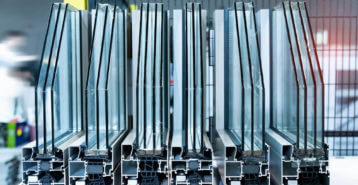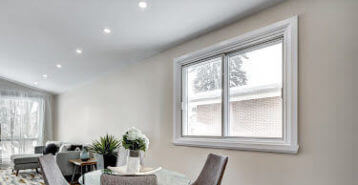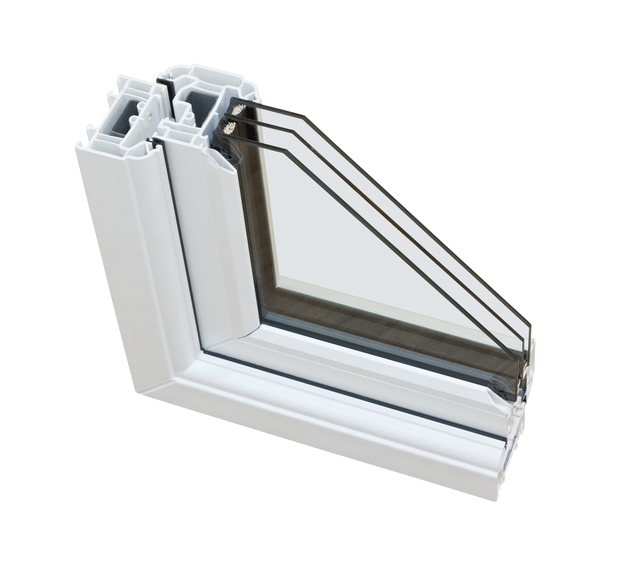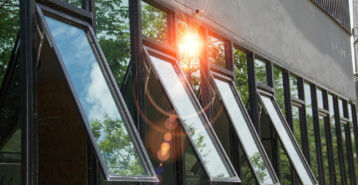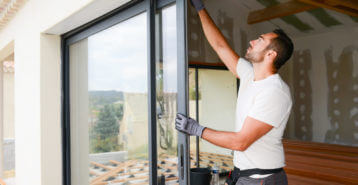What Are Privacy and Obscure Glasses?

How Much Does Privacy Glass Cost?
The cost to install privacy or obscure glass in your home depends on many different factors, including:
- Window shape, size and thickness
- Type of glass
- Edgework detailing
- Pattern
- Installation costs
However, generally speaking, you might pay around $200 to $400 for a one-eighth-inch-thick tempered frosted glass panel that’s two feet by two feet with a sand-blasted decorative pattern on one side.
Difference Between Frosted and Obscure Glass
Obscure glass refers to any glass that reduces visibility through patterning, frosting, sandblasting, or acid etching. Frosted glass is made by treating standard glass with acid to create a soft, diffused look, and can be further etched to add decorative patterns. Other types — like ribbed, raindrop, or patterned obscure glass — are formed by passing molten glass over cylindrical molds to imprint unique designs. The glass is then slowly cooled through annealing, a process that prevents cracking and increases durability.
Difference Between Privacy and Tinted Glass
We’ve noted many of the benefits and uses for privacy glass. Many homeowners, though, opt for tinted residential windows rather than privacy glass.
Tinted glass can provide many different benefits outside of increased privacy. It cuts down the amount of sunlight entering your house, which keeps rooms cooler and shaves money from your utility bill. Tinted windows also significantly reduce the amount of ultraviolet rays you might be exposed to if you are sitting in a sunlit room.
There is a wide range of window tints available for residential use, and their costs can vary greatly as well.
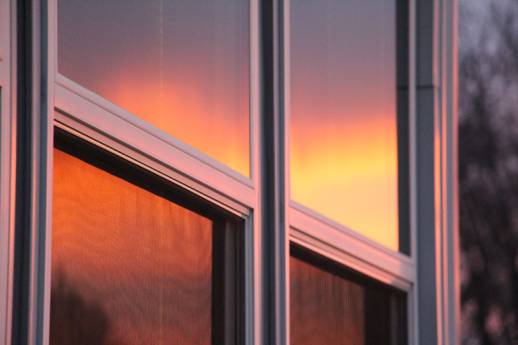
Types of Obscure Glass
Obscure glass can be used anywhere in the home where you desire increased privacy, or where you want to add decorative accents. There are many different types of obscure glass to choose from. Here’s a rundown of 12 of the most popular types of privacy glass.
Frosted Glass
This is one the most widely used types of privacy glass in both residential and commercial settings. Manufacturers sandblast or etch the glass with acid to decrease transparency. It’s commonly used in bedrooms, offices, bathrooms and home libraries. This process is similar to etching with one key difference: Frosting changes the appearance of the glass, while etching alters its texture.
Etched Glass
The process of acid-etching glass dates back hundreds of years. Hydrofluoric acid is used to erode the top layer of the glass, which leaves behind a frosted look that can be further enhanced with colorful embossing. Alternatively, the glass can be sandblasted at high pressure to erode the top layer of glass, leaving behind a rough surface with enhanced opacity.
Tinted Glass
Tinted residential or commercial windows can provide substantial cost savings on energy bills in hot climates because they block up to 80 percent of heat from sunlight from entering your home. Residential window tinting is an affordable retrofit option for cost-conscious homeowners who want enhanced privacy.
Textured or Patterned Glass
Also called rolled glass, this glass features visually pleasing decorative textures or patterns. During manufacturing, molten glass passes between two cylinders – one is flat, while the other has a pattern or texture. The finished glass is imprinted with a texture or pattern on one side and is flat on the other.
Mirrored Glass
Mirrored glass uses a reflective film on one side so you can see through the window on one side and see your reflection on the other.
One-Way Glass
Likely you’ve seen a police interrogation on television where officers are watching the interview unnoticed through a large pane of glass. That’s one-way glass. The light inside the interrogation room is twice as bright as the light on the other side, which provides a one-way view through the window.
Smart and Switchable Glass
Smart glass, also called light control glass, is one of the newest products to hit the privacy glass market. Likely you are familiar with glasses lenses that tint in the sunlight – that’s smart glass in its most basic form. Today’s smart or switchable glass has technology-enhanced films that use electricity to transform the glass from a transparent window into opaque privacy glass. The film is either laminated into the glass during manufacturing or retrofitted on one side of the pane.
Glass Block
Prefabricated glass block windows combine enhanced privacy with ease of installation. However, not all glass brick patterns are completely private – make sure you choose patterns that are appropriate for their location.
Stained or Leaded Glass
Stained glass is made by applying vitreous paint — pigments from bright metal oxides mixed with finely ground glass — to one side of the pane for rich, lasting color. Leaded glass joins multiple stained glass pieces with flexible strips of lead, forming decorative patterns or images. After assembly, the sections are glazed and cemented to lock each piece securely in place.
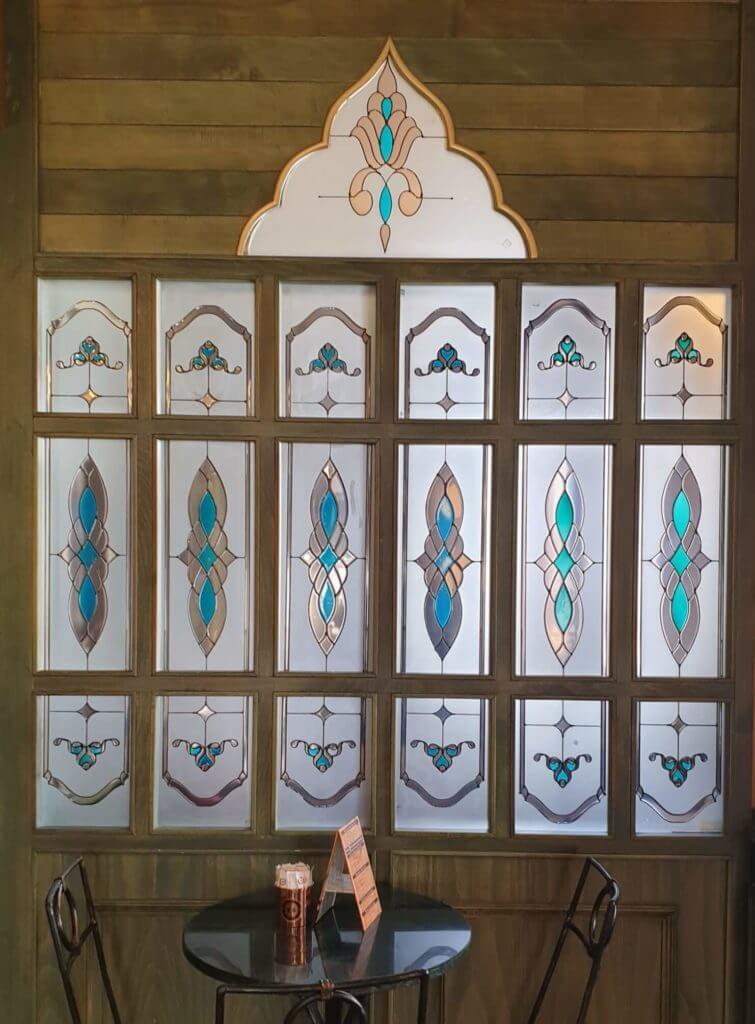
Other Privacy Glass
- Ribbed: Thin vertical ribs, also called reeds or corduroy, are spaced about ⅛ to ½ of an inch apart to create varying degrees of visual distortion.
- Raindrop: This pattern mimics the look of flowing water. You’ve likely seen it in sunrooms or atop the seat dividers at higher-end restaurants.
- Opaque: This type of glass has no transparency. It can be created using films, lamination, paint or tint.
Obscure Glass and Safety
Obscure glass is primarily chosen for privacy and is often tempered to meet building codes, especially for windows near entry doors or within 18 inches of the floor. Tempered glass shatters into small, rounded pieces rather than sharp shards, making it safer to handle if broken.
For added protection, obscure glass can be laminated, which involves fusing panes together with adhesive resin. This process creates a pane that is extremely difficult to break—bullet-resistant glass, for example, is made through lamination.
Where Can Homeowners Install Obscure and Privacy Glasses?
Privacy and obscure glass can be used throughout your home to increase privacy. It’s commonly used to mask the outside view in bathroom windows, as well as in shower doors. Glass block windows are a common architecture design feature in many homes. Oftentimes, obscure glass windows are used when homes are built in close proximity to one another so homeowners still enjoy the benefits of natural lighting without sacrificing privacy. Privacy glass offers varying levels of opacity, so be sure to choose obscure glass according to your desired level of privacy.
Obscure glass also can be used as a design feature. It can make a bold statement when used as the kitchen backsplash or as shelving in contemporary design styles. It can be used to accent front doors that have decorative sections of glass. Wherever it’s placed, privacy glass can add enhanced visual appeal, increased privacy, and increased energy savings.


